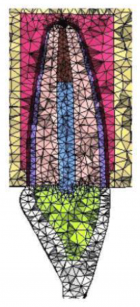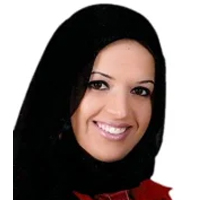Table of Contents
Facing biological risk in child and adolescence neuropsychiatric services during COVID-19 outbreak: Management of protection levels for the direct access
Published on: 29th December, 2020
OCLC Number/Unique Identifier: 8876014608
COVID-19 emergency requests a new definition of security procedures adopted in Child and Adolescence Neuropsychiatric Services (CANS).
The WHO recommends using Personal Protective Equipment (PPE) for preventing inter-human transmission of viral diseases [1]. These recommendations regard primarily hospitalized patients and ambulatory medical services for adults.
Utilization of midwives service scheme among women farmers in Southwestern Nigeria
Published on: 7th December, 2020
OCLC Number/Unique Identifier: 8872657832
Maternal mortality accounts for most deaths in agrarian communities of Nigeria due to poor access to midwives services and inadequate Skilled Birth Attendants (SBAs). The Midwives Service Scheme (MSS) was established to engage more SBAs and advocate better utilization of pre and post-natal care services. Studies have focused on maternal mortality reduction, however, information on underlying factors that predispose MSS target beneficiaries to its utilization is scarce. Therefore, utilization of MSS among women farmers in southwestern Nigeria was investigated. A four-stage sampling procedure was used. Three states from southwestern states (Oyo, Ogun and Ekiti) were randomly selected. Thereafter, ten Local Government Areas (LGAs) from eighteen LGAs that adopted MSS programme in the selected states were sampled. Also, 30% of the MSS facilities in the sampled LGAs were selected, resulting in 13 MSS facilities. Proportionate sampling technique was used to select 20% of registered women farmers in the selected 13 MSS facilities to give 207 respondents. Interview schedule was used to collect data on respondents’ socioeconomic characteristics, Maternal Health Information Sources (MHIS), Maternal Health Information Seeking Behavior (MHISB) and utilization of MSS. Data were analyzed using descriptive and inferential statistics. About (55.6%) of the respondents had formal education. MHISB and effectiveness of MSS was rated low by 53.2% and 55.6% of the respondents, respectively. MSS was moderately utilized by 64.7% of the respondents. The MSS utilization was 49.24 ± 11.39 (Oyo), 45.08 ± 9.28 (Ogun) and 44.00 ± 10.71 (Ekiti). Respondents’ education (χ2 = 12.85), family size (r = 0.02), monthly income (r = 0.48) related positively and significantly (r = 0.27) to MSS utilization.
Assessment of knowledge, practice and associated factors towards prevention of novel corona virus among clients attending at Debre Tabor General Hospital, Debre Tabor Town, North West Ethiopia, 2020: Institutional based cross-sectional study
Published on: 7th December, 2020
OCLC Number/Unique Identifier: 8872655439
Background: Corona virus disease is a highly infectious disease caused by the newly innovated corona virus. An emerging respiratory disease was abbreviated as COVID-19, after it has been first reported in December 2019 in Wuhan city of China. Ethiopia Ministry of health initiated multidisciplinary approach to tackle COVID-19 of which awareness creation is the main. The aim of this study is to assess knowledge, practice and associated factors towards prevention of novel corona virus among clients in Debre Tabor general hospital, Northwest Ethiopia, 2020.
Methods: Institution based cross sectional study design was conducted in Debre Tabor General hospital from May 15 to May 30, 2020. A structured questionnaire was used for data collection. The data were entered into epi data version 4.4 and exported to SPSS window version 25 for analysis. Binary and multivariable logistic regression was fitted. Odds Ratios with 95% Confidence interval and p - value ≤ 0.05 were considered to assert significance.
Result: A total of 345 clients were analyzed and the response rate was 96.4%. The mean age was 32.95 with S.D ± 13.18 years. Majority of the respondents were male (75.7%). Among the study participants 54.2% with (95% CI: [49.0, 59.2%]) and 49.0% with (95% CI: [43.5, 53.4%]) have good knowledge and god practice on COVID-19 preventions respectively. Sex AOR: 4.33 (2.06, 9.09), family size AOR: 2.49 (1.01, 6.15 and heard from social media AOR: 2.78 (1.21, 6.39) were significantly associated with knowledge of respondents. Knowledge AOR: 3.11 (1.59, 6.10) was significantly associated with practice of clients. Residency and those heard from TV were significant variables for both.
Conclusion and recommendation: In this study the overall knowledge and preventive practices of the respondents were found to be low. Sex, family size, residency and sources of information were associated factors for knowledge. In addition to this knowledge was significant factor for practice. Health education programs aimed at mobilizing and improving COVID-19 related knowledge and practice intend to be strengthened.
How the COVID-19 outbreak affected physician-patient relationship
Published on: 17th November, 2020
OCLC Number/Unique Identifier: 8872699857
Physician-patient communication is the most basic element and vital skill of physicians in the diagnosis, treatment, and establishing diagnostic protocols. As the risks of contagion and viral infection are higher in physicians and health workers, front line soldiers inpatient care units, so they should establish strict protective measures. However, patients value greatly face to face and close relationships with their doctors, including facial interviews and physical examinations. So social and physical distancing between physician and their patients can be remarked as a bigger toll than the risk of COVID-19 contagious.
The role of islamic lifestyle and healthy nutrition in accordance with the recommendations of islam and the holly quran by focusing on the risk of cancer incident
Published on: 17th November, 2020
OCLC Number/Unique Identifier: 8872660064
Background: The Islamic religion has emphasized the importance of health and well-being, and Muslims have recognized the value of a good and healthy life based on Islamic recommendations. Health-oriented lifestyle is a multi-dimensional phenomenon that is the purpose of this study to investigate the Islamic lifestyle.
Methods: In this review study, we tried to explore practical strategies in Islam through access to credible sources in the form of a descriptive article on achieving a healthy lifestyle in nutrition. For this purpose, using keywords and electronic and manual searches in authentic Islamic and medical sources, information was searched and collected to answer the research question.
Results: Based on the results of the reviewed studies, the guidelines of Islamic religion and beliefs are mainly based on improving lifestyle factors and dietary habits. It has been emphasized that adherence to the Islamic dietary guidelines and lifestyle, may lead to less risk of diseases.
Conclusion: Given the availability of valuable nutritional resources and instructions in Islam to prevent and combat nutrition-related diseases, these theories can be applied and prevent from spreading and creating malnutrition-related diseases; the guidelines of Islam on healthy lifestyles in nutrition can be recommended to the world as a basic strategy
Rural adolescent health: Issues, behaviors and self-reported awareness
Published on: 22nd April, 2020
OCLC Number/Unique Identifier: 8582318282
Purpose: The purpose of the study was to examine the health status of rural adolescents and young adults in the United States through a comprehensive review of detailed health information, behavior and health awareness. The disparity in health awareness between rural and non-rural residents compared and evaluated.
Methods: Rural-Urban Commuting Area (RUCA) codes were combined with respondent-level data from the Longitudinal Survey of Adolescent to Adult Health (Add Health) to classify individuals as rural/non-rural residents. Health characteristics and perceived health awareness was tested for statistically significant differences using ANOVA. Differences in weight perception accuracy was compared for systematic differences controlling for self-selection into rural areas using a two-stage logistic selection model.
Findings: Analysis revealed that rural residents have a higher incidence of major health conditions including epilepsy, high cholesterol, high blood pressure and diabetes. Additionally, they have a higher prevalence of unhealthy behaviors including drinking and drug use. Rural residents are less likely to be insured, but more likely to be overweight or obese. While rural adolescents are more likely to mis-classify their body weight, this misclassification is a result of the higher incidence of overweight rather than the residential location.
Conclusion: The higher prevalence of chronic conditions combined with the income and education levels suggests the rural environment is a unique and potentially challenging context for adolescent health. Improving rural adolescent health will require innovative solutions appropriate for rural environments and changes in individual health literacy. Solutions must be multisectoral, engaging education, economic development, and other community perspectives to establish key drivers for health equity.

If you are already a member of our network and need to keep track of any developments regarding a question you have already submitted, click "take me to my Query."


















































































































































